- The outdoor season is winding to an end, and the time has come to reap your much-deserved reward, after many months of work.
- In many cases inexperience, or a craving to savour those delicious cannabis buds too early, can spoil a harvest.
- You must not forget that harvesting, trimming and drying your plants properly are as important as all the work you've done in recent months.
- So, if you’ve successfully reached the final stage, slowdown in order to put the finishing touches on the outdoor season by following a few simple steps that we provide below. Read on...
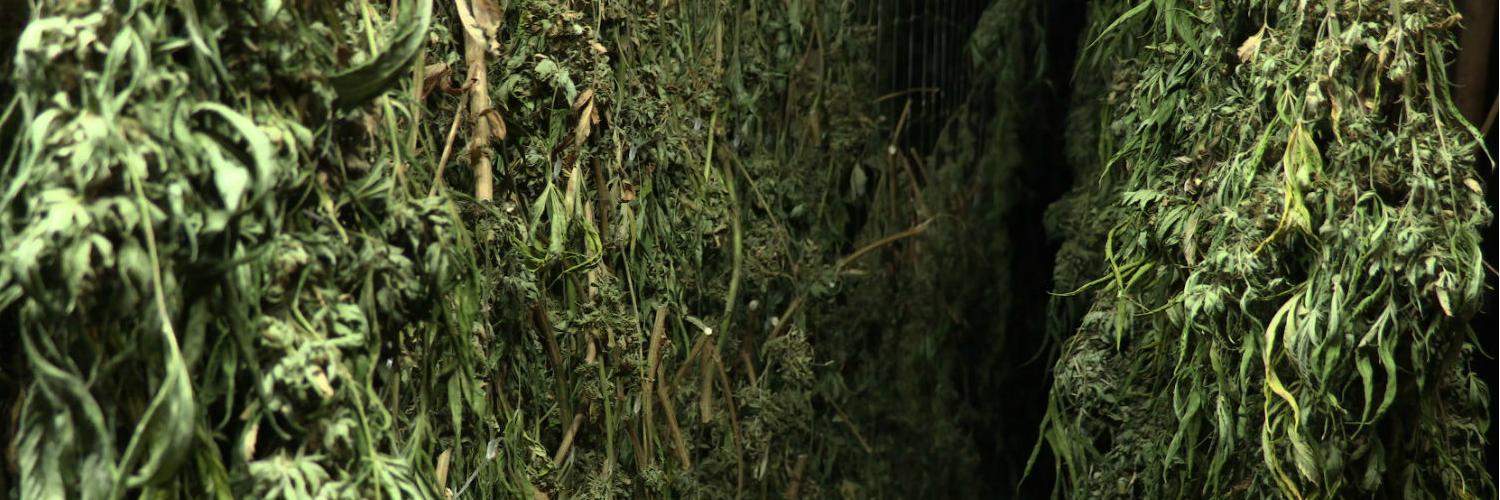
Before harvesting...
Prepare your space
Carefully choosing the place where you are going to dry your cannabis plants is important to produce top-quality buds. Ideally, the space for this should feature the following characteristics:
- Aeration: The drying room should have at least a modicum of ventilation, so set the exhaust and intake fans to run for five minutes every two hours to ensure proper air circulation.
- Discretion: If you don't want the whole neighbourhood to know you've just harvested your marijuana plants, choose a discrete space, or install a filtering system for pruning and drying time, as this will be when the smell of cannabis is most intense.
- Temperature: Try to use a place where the temperature does not rise over 27 degrees, above which some cannabinoids begin to decay, and minimise temperature variations. You may find it very difficult to control the temperature of your drying room, but if you have the technical equipment necessary to do so, these are the parameters you should follow:
- During the first 3 days of drying: Keep the room at 20° so that the buds dry quickly.
- Day 4 to day 15: Lower the temperature to 17-18º in order to slow down the process.
- Lighting: As far as possible, try to keep the drying room dark, as prolonged exposure to light will degrade the THC - light and air are the main elements affecting the quality of cannabis flowers.
- Humidity: A very humid drying space may lead to the development of mould and mildew, which can ruin your whole crop. Conversely, if the environment is too dry, the flowers will dry too fast, living too little time for the metabolism process, which will cause the final product to taste bland. Thoroughly clean the room before placing your plants in it and try to keep the humidity constant - at a level between 55 and 65 per cent. Avoiding sudden changes in humidity is essential for a high-quality final
Calculate the time you'll need
A good manicuring of half a kilo of marijuana buds will take about 6 hours if you decide to do it by hand, and about two hours with a trimmer. Plan your time well and try to do on your day off so that you don´t get stuck halfway.
If you are growing in pots
Carry out a good washing of the roots to prevent the plant from retaining fertilisers; besides spoiling your buds' taste, they are not good for your health either. Remember that whatever you give your plants is going directly into your body when you consume your cannabis, which is why we always recommend not using chemical fertilisers or pesticides, which, in addition to be being harmful to the environment, are also bad for your health.
Even if you have used organic fertilisers, it is not advisable for the plant to retain traces of minerals and other nutrients, which is why before harvest time (approximately two or three weeks) we recommend using water only on your plants.
How to know if you have overfertilised your cannabis plants
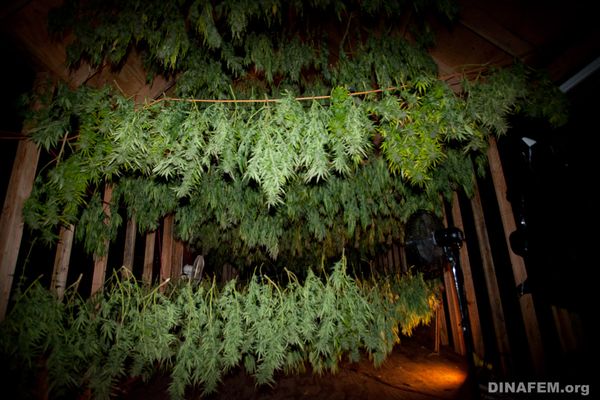
If you find that the tips of the leaves are "burned", or whole leaves present an intense dark green colour, it is very likely that you have overfertilised your marijuana plants. This is a common mistake among novice growers and, as mentioned above, will damage the taste of the final product.
One way to alleviate the unpleasant taste of fertiliser is a thorough washing of the roots to remove salts retained in the substrate and excess nutrients in the plant. Root washing involves using lots of water: about double the volume of the substrate (if the container is 10 litres, watering it with 20). This washing should be done with water with a pH of 6.5, and then the pot should be left to drain for as long as necessary.
What materials do I need to harvest my cannabis plants?
Once you have prepared the space where you are going to dry your cannabis plants, prepare the table you will use for the manicuring and, above all, get comfortable, as this process can take a few hours (always depending on the number of plants you need to trim). Here is a list of the necessary materials:
- Adequate scissorswill be of great help. We recommend self-retracting scissors for trimming and pruning.
- Powder-free latex gloves
- Thin line(like that used to hang clothes)
- Labels
The harvest, step by step
Step 1: choose the right time
Selecting the ideal time to cut your marijuana plants will be a factor impacting the quality of your crop. If you want to know what the optimal point at which to harvest, click here.
Regardless of the week in the cannabis life cycle when you decide to harvest, the perfect time of day to do so is in the morning; or, if we are talking about indoor cultivation, when the lights turn on. This is because at night the plant optimises its resin production.
Step 2: harvest
Cut them at the base, one at a time. Cutting all your plants and leaving them lying there waiting to be trimmed makes no sense. You can harvest whole plants and / or branches, for which we recommend removing the largest leaves first. With the bulkiest material out of the way, it will be much easier to trim the buds. You can remove the large leaves before cutting the plant, so that it remains standing and it's easier, or after cutting it, as you prefer.
Step 3 - Trimming: Dry or wet?
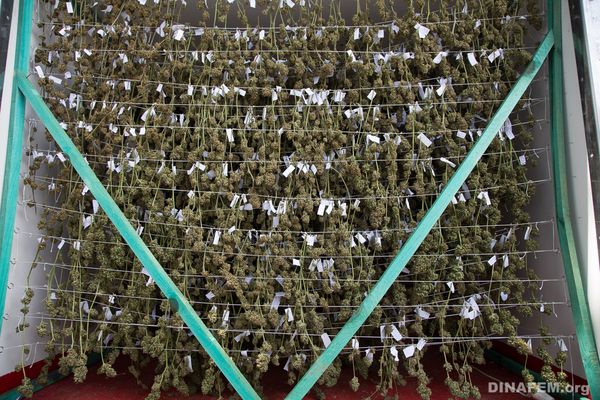
You could say that there are two "philosophical schools" about this: growers who believe in dry trimming, and others who think wet is the best. In the end it is a question of preference, since both methods have advantages and disadvantages. Here we explain what they are so that you can decide what is best for you.
Dry trimming:
After removing the large leaves, hang the plants upside down and let them dry for a week. After 7 days, when most of the moisture is gone from the buds, and the leaves around them are dry and brittle, prune very carefully so that the floral material does not fall off. Both with this kind of trimming, or if you do it wet, you can set aside the small leaves covered with trichomes to make extractions or hashish.
Dry trimming is advisable if the humidity level in the drying room is low or can be easily adjusted. But when controlling the humidity means that you have to use several electrical devices, which can be very expensive, wet trimming is probably a wiser choice. The main problem with using dehumidifiers - one or more, depending on the size of the room - is that apart from drying the air, they also produce heat, speeding up the drying process and negatively affecting the buds, which could end up drying too fast. Hence the importance of setting the devices according to the environmental conditions in the room. In order to obtain a high-quality final product, temperatures should be kept between 18-23ºC and humidity, between 55 and 65 per cent.
- Advantages:The smell and taste are better preserved. The metabolism of the flowers is slowed down because these are covered with tiny, resin-packed leaflets, which are great for extractions and make for a more intense flavour and the aroma. Oxidation through the air is slowed down too, accounting for the slower, more beneficial metabolism process.
- Disadvantages:Leaving the small leaves during drying can lead to the appearance of mould and mildew. With dry trimming it is easier to inadvertently tear off part of the bud. One effective way to prevent diseases and fungal attacks is to monitor the plants closely on a daily basis.
Wet trimming:
Wear latex gloves to keep the resin from sticking to your hands, and begin carefully. Try not to crush the buds. While they're not made of porcelain, be gentle with them to avoid damaging the trichomes. When cutting the larger leaves try to get to the base of the petiole (the stem holding the bud), and do so as quickly as possible, as leaving it can lead to mould during the drying. Cut the small leaves that grow around the bud so that the final result is as clean as possible. Wet trimming favours air circulation within the plant matter, which is particularly advantgeous if the humidity level in the drying room is too high. If such is the case, you can use a dehumidifier to help you keep the right temperature (18-23ºC) and humidity (55-65 per cent), but bear in mind that these devices can be difficult to use. A further advantage of wet trimming is that it prevents the risk of fungal diseases.
- Advantages:Improves airflow and facilitates drying. Prevents fungal diseases, particularly botrytis.
- Disadvantage:The drying is not as even, the quality of taste and aroma is not as great as with dry trimming, and more damage is done to the trichomes. Also, if drying is too fast, the metabolism process could be affected and the flowers could develop a leafy taste - which no grower wants.
How to dry you cannabis plants
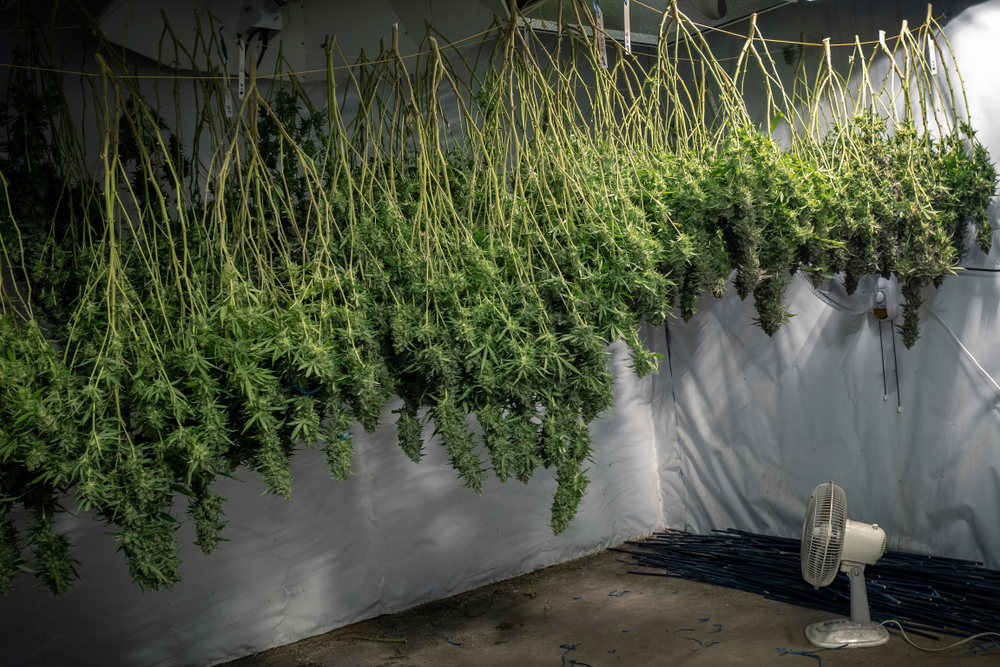
Once you have removed the largest leaves from your plants (in the case of dry trimming), or they are completely trimmed (wet pruning), tie them at the base of the main stem upside down. An easy way to place them in the drying room is to install a wall-to-wall line (secured to two pins) and to tie the plants to it, as if you were hanging clothes out to dry. After 15 days (approximately) your buds will be dry and ready for the curing stage. During the process, 75 per cent of the water content of the plants will evaporate into stem and gas.
Here are some guidelines to help you during the drying process:
- Keep the drying room dark.
- Keep a constant temperature (between 18 and 23ºC) and humidity level (between 55 and 65 per cent). This step is key as these two parameters have a direct impact on the quality of the weed.
- Keep track of changes that may affect the final result with a digital thermo-hygrometer that records minimum and maximum values.
- Set the exhaust and intake fans (avoid using a stand fan) to run for five minutes every two hours in order to ensure proper ventilation in the drying room.
- Monitor the harvested plants on a daily basis to timely detect fungal growth. If you find an infected flower, take it out of the drying room, put it in a sealed bag and dispose of it immediately.
- Take a sample from the flowers at different moments and gradually check the maturity stage of each plant. You can squeeze the flowers to see if they creak as well as to analyse the aroma they give off - type of smell, intensity and the like.
- Taste the weed after 15-20 days and check its ripeness. The flowers should be completely dry and ready for consumption within a maximum of one month. That said, if you wish to further improve the properties of your weed, you can subject the flowers to the so-called curing process.
How to cure your cannabis plants
Cannabis is cured to improve the quality of the flowers. A successful curing process involves handling three parameters - i.e. temperature, humidity and light - as these greatly affect the quality of the final product.
Here are some recommendations for an optimal curing process:
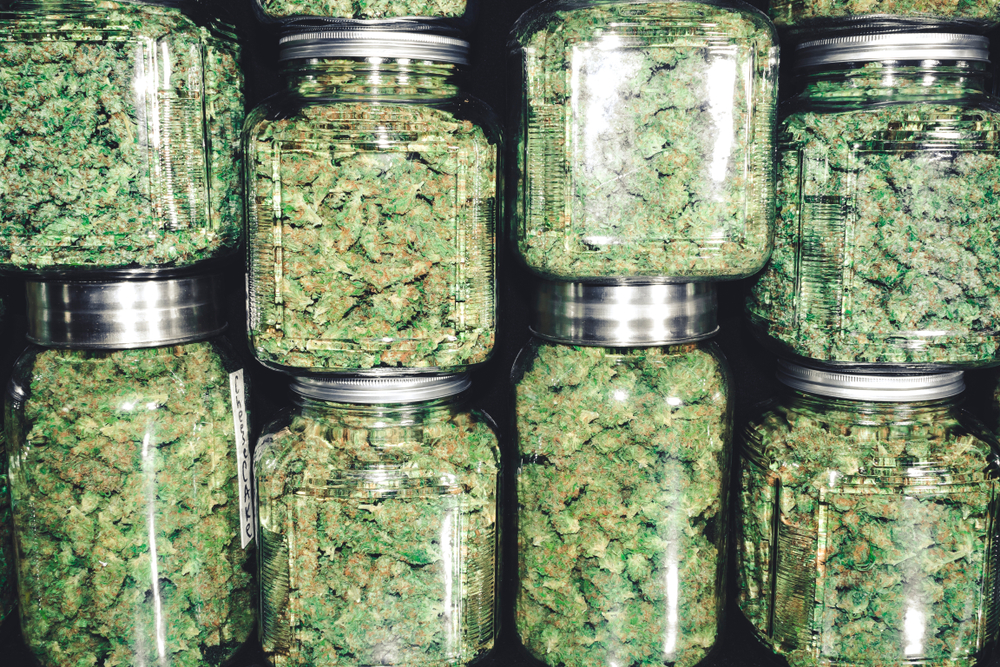
- Place the flowers inside airtight glass jars. During the first three weeks, open them for ten minutes every day. When you do so, make sure the room is not illuminated, as light could degrade the flowers and affect their quality.
- Keep a constant temperature (around 20ºC) and humidity (between 50 and 55 per cent) in the storing room.
- Taste the flowers every week to check their ripeness. If the taste is bland or leafy, you can place some citrus peels inside the jars. These should be removed after eight days.
- In the four months following harvest, open the jars for twenty minutes a couple of times a month. Open them just once for ten minutes on month five and stop ventilating on month six.
- On month eight, the process grinds to a halt and the flavour and aroma start to lose intensity. As for the effect, it tends to get more physical and sedative, but the quality of the weed is still good.
Hopefully, these tips will help you go about the last stages of the growing process in a more efficient way. As you already know, they are key to a high-quality final product.
Happy harvesting!



Comments from our readers
There are no comments yet. Would you like to be the first?
Leave a comment!Did you like this post?
Your opinion about our seeds is very important to us and can help other users a lot (your email address won't be made public).